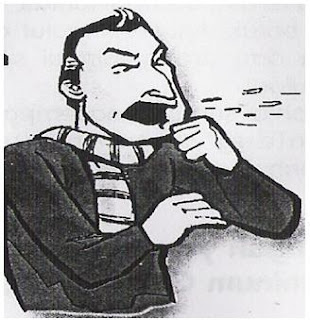 Assessment - Nursing Care Plan for Elderly
Assessment - Nursing Care Plan for Elderlya. The identity of the patient
Include name, age, sex, religion, education, nation, and address.
b. Disorder found in elderly
Swallowing, communication, pain and others.
c. Mood, consciousness
Hostility, sleep disturbances, and others.
d. History of major problems
Ever stroke, cough, dementia, fractures.
e. Questionable health habits
Smoking, alcohol, and others.
f. Assessment system
Assessment system implemented in sequence starting from system requirements to the musculoskeletal system.
g. History of treatment
Well before the illness, drugs in drinking, both from a doctor's prescription or purchased free (including herbs).
h. Examination of the function
- Activities of daily living that require only simple body's ability to function such as sleeping, dressing, bathing.
- Activities of daily living
- In addition to basic skills that require different coordination ability of the muscle, the more nervous as well as various organs of other cognitive abilities.
- The ability of mental and cognitive function, especially regarding the intellect, memory and long memory about things that just happened.
Nursing Diagnosis for Elderly1. Risk for injury: falls related to increased activity.
2. Acute pain: (headaches / dizziness) associated with fatigue.
3. Activity intolerance related to imbalance of O2 supply: weakness.
4. Risk for infection related to the state of nutrition: state of immunity.
Nursing Interventions for Elderly1.
Risk for injury: falls related to increased activity.
Goal: The client does not fall.
Intervention:
1. Explain to the client about the causes of rheumatic pains / aches.
R /: to understand the causes of line / curve.
2. Provide non-pharmacological measures to eliminate fatigue in the legs such as massage.
R / can stimulate pain in the leg.
3. Avoid doing heavy activity.
R / can reduce ached at the foot area.
4. Avoid foods that contain nuts.
R / can prevent arthritis.
5. Teach the foot by not using footwear in the morning.
2.
Acute Pain: (headaches / dizziness) related to fatigue.
Goal:headaches / dizziness is reduced
Expected outcomes are:- Headaches / dizziness is reduced.
- Not nervous.
- Not pale.
- Can not sleep.
- No pacing.
Intervention:1. Explain to the client about the cause of headaches / dizziness.
R /: to understand the cause of headaches / dizziness.
2. Provide a description of the kx about the side effects of taking medications too often.
R /: understand the side effects of medication.
3. Give nonfarmakologi action to eliminate the headaches, such as a cold compress on the forehead, back and neck massage, a quiet, dim the lights, relaxation techniques.
R /: relieve headaches.
4. Give analgesics as indicated.
R /: to help relieve headaches.
3.
Activity intolerance related to imbalance of O2 supply: weakness.
Goal: - Able to do the activity.
- Not tired.
- Do not bother.
- Vital signs are normal.
Intervention:1. Review of daily activities.
2. Teach for leg exercises every hour / ROM.
3. Teach ± sit 3-5 minutes before standing and walking.
4. Increased frequency of activity and distance gradually.
5.
Risk for infection related to the state of nutrition: state of immunity.
Goal:
- There was no infection.
- Normal body temperature (36-370C).
- There is no redness, irritation around the wound.
- Normal leucocytes (10,000 m 4500-I)
Intervention:1. Teach to minimize contact and pathogens.
2. Explain the need to maintain hygiene
(For example: Shower every day, oral care).
3. Examine the mouth and throat with signs of infection.
4. Teach drinking 200cc/hari.
5. Strive to improve nutrition, diit enough.
6. Provision of adequate vitamins and minerals.
 Definition, Purpose of Effective Cough and Method of Effective Cough
Definition, Purpose of Effective Cough and Method of Effective Cough








